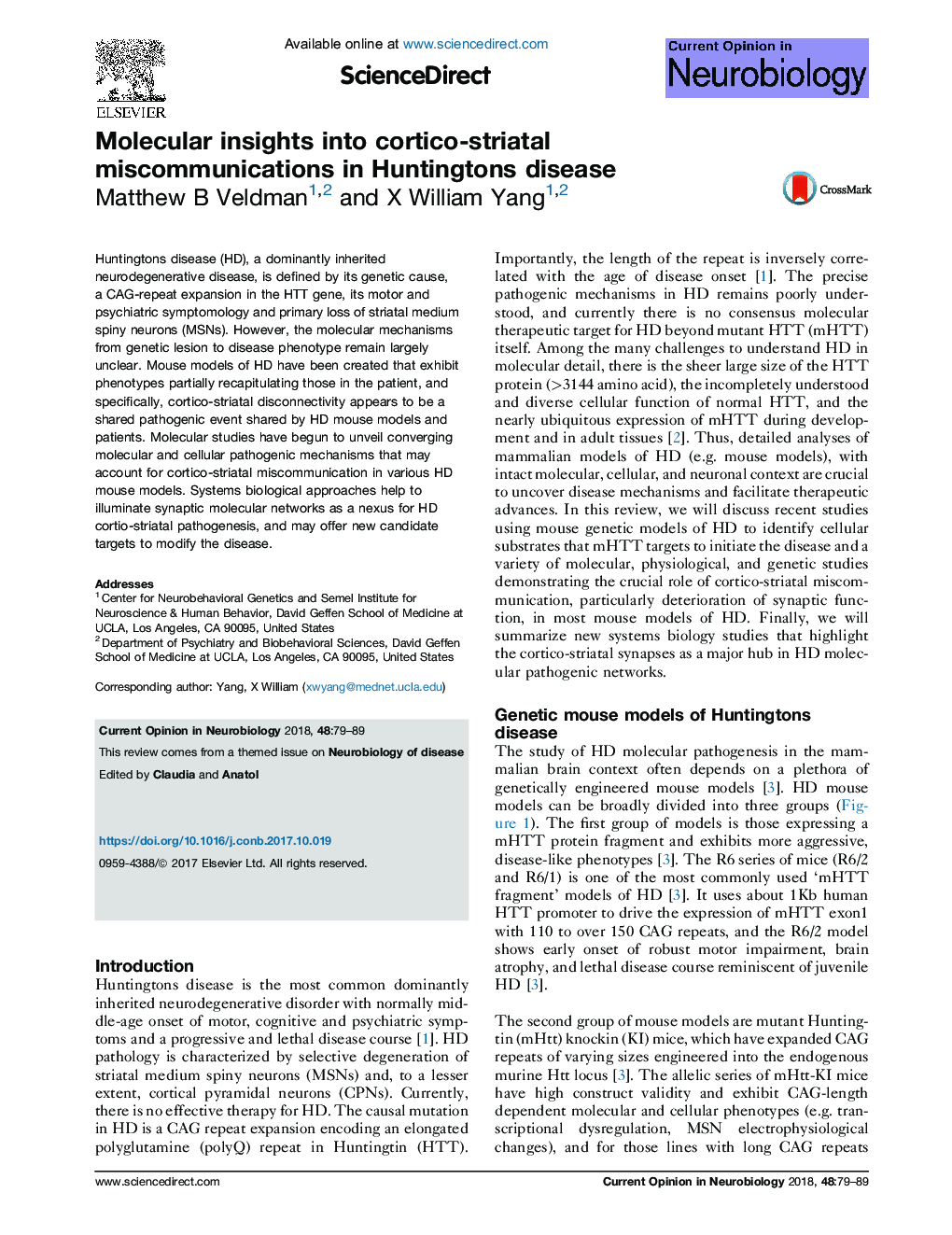| Article ID | Journal | Published Year | Pages | File Type |
|---|---|---|---|---|
| 8840149 | Current Opinion in Neurobiology | 2018 | 11 Pages |
Abstract
Huntington's disease (HD), a dominantly inherited neurodegenerative disease, is defined by its genetic cause, a CAG-repeat expansion in the HTT gene, its motor and psychiatric symptomology and primary loss of striatal medium spiny neurons (MSNs). However, the molecular mechanisms from genetic lesion to disease phenotype remain largely unclear. Mouse models of HD have been created that exhibit phenotypes partially recapitulating those in the patient, and specifically, cortico-striatal disconnectivity appears to be a shared pathogenic event shared by HD mouse models and patients. Molecular studies have begun to unveil converging molecular and cellular pathogenic mechanisms that may account for cortico-striatal miscommunication in various HD mouse models. Systems biological approaches help to illuminate synaptic molecular networks as a nexus for HD cortio-striatal pathogenesis, and may offer new candidate targets to modify the disease.
Related Topics
Life Sciences
Neuroscience
Neuroscience (General)
Authors
Matthew B Veldman, X William Yang,
